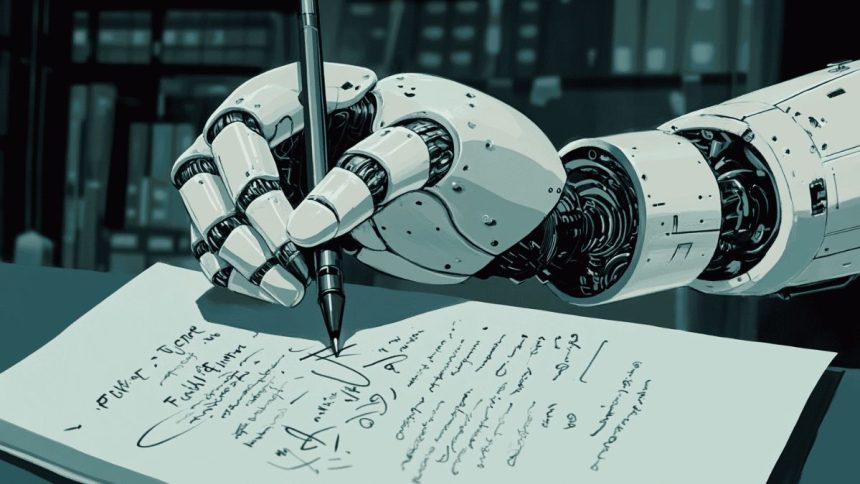One pressing question is heard in classrooms, offices, and publishing houses: In an age when machines can craft essays, write poetry, and even mimic the quirks of human speech — can you tell if this was written by a robot?
AI-generated content is changing the way we create and consume information. ChatGPT and Claude are powerful tools that can generate human-like text within seconds. As their use increases, AI detectors and humanizers are becoming more important. These systems are on the front line of identifying and disguising machine-written material. But how do they work? Are they reliable? And what does their evolution mean for creativity, education, and ethics?
We’ll dive into the world of AI detectors, humanizers, and the ever-evolving battle to detect — or conceal — robot authorship.
The Rise of AI Writing Tools
AI writing tools powered by large language models (LLMs) have quickly become extremely popular due to their efficiency. AI-powered writing tools can dramatically speed up processes like email writing, summarizing articles or scripting commercials by learning from billions of words found online. LLM-powered AI tools also mimic human tones, syntax and structures by mimicking them and learning from these billions of words found online.
With convenience comes concern. Schools are worried that students may submit essays written by AI. Recruiters wonder if cover letters were truly written by the applicants. Bloggers and journalists struggle with maintaining authenticity in their articles, so identifying whether an article generated by AI is an important task.
What Are AI Detectors?
AI detectors are computer programs that analyze text in order to distinguish whether it was written by humans or artificial intelligence, using both linguistic features and statistical models to assess content.
How they work:
- Perplexity and Burstiness: AI-generated content tends to be more predictable and lacks the variety humans often bring. Detectors measure perplexity (how “surprised” a model is by a word choice) and burstiness (variation in sentence length and structure).
- Stylometric Analysis: This technique examines writing style, grammar choices, and sentence complexity to distinguish AI-generated patterns from human quirks.
- Training Data Comparison: Some tools compare text against known examples from AI writing models to find overlaps in structure or word usage.
Popular AI detectors include:
- OpenAI Text Classifier (retired in 2023 due to low accuracy)
- GPTZero
- Originality.AI
- Writer.com’s AI Detector
- Sapling AI Detector
These tools often present results on a probability scale (e.g., “80% AI-generated”) or provide flags and scores to guide the user.
The Accuracy Dilemma
While detectors are improving, they’re far from perfect. Many factors can lead to false positives (labeling human text as AI) or false negatives (missing actual AI content).
Consider:
- Creative Writing: AI struggles with truly unique, emotionally rich prose. Yet, detectors can sometimes confuse abstract human writing as “too robotic.”
- Edited AI Text: A user might generate content with AI and edit it manually, blurring the lines between human and machine.
- Non-Native Writers: AI-generated text often uses “perfect” grammar. Ironically, a non-native speaker’s writing may be flagged as more authentic than a native speaker using AI assistance.
The result? AI detectors should be used cautiously and never as the sole basis for punishment or decision-making. Many developers of these tools include disclaimers warning against overreliance.
Enter the Humanizers
On the other side of the spectrum are AI humanizers—tools designed to disguise AI-generated content so that it appears authentically human. These tools “rewrite” or tweak content to evade detection and appear more natural.
Some popular AI humanizers include:
- Undetectable AI
- HIX.AI Humanizer
- Paraphraser.ai
- Quillbot (used creatively)
- StealthWriter
How they work:
Humanizers typically rephrase AI content with added randomness, varied sentence structure, and more human-like inconsistencies. Some even mimic the writing style of non-native speakers or introduce intentional “imperfections.”
Irony is evident: one group develops tools to detect computer writing, while another creates software that makes it indistinguishable from human work. It’s an ever-changing high-tech game of cat and mouse.
The Ethical Dilemma
The existence of AI detectors and humanizers raises important ethical questions.
In education: Is it cheating if a student uses a humanizer to “pass” a detector? Should we be teaching students how to use AI responsibly instead of catching them?
In journalism and content marketing: If an article is written by AI and humanized to avoid detection, does it lose credibility? Should content creators disclose when AI plays a role?
In hiring and communication: Is it deceptive or just smart to use AI in hiring and communication?
Transparency and accountability have become ever more essential in an age where AI-generated text may be difficult to monitor or regulate.
Can You Really Tell If a Robot Wrote This?
Maybe. But maybe not.
Even today’s most sophisticated detectors can only offer probabilities, not absolutes. Even experienced human readers may be misled if AI-generated content has been edited and humanized for readability purposes.
This ongoing arms race between detection and disguise will continue to evolve. AI will get better at sounding human. Detectors will adapt. Humanizers will find new ways to mask robotic origins. The line will only blur further.
But perhaps the most important question isn’t can you tell if a robot wrote something—but should it matter?
No matter its source, as long as its message is helpful and clear. Looking ahead, perhaps we shouldn’t choose between AI writers and human writers; rather we should explore ways in which both can coexist harmoniously.
Conclusion: A Co-Written Future
We’re entering an era where collaboration between humans and machines is the norm—not the exception. AI detectors and humanizers are only tools in this ecosystem. These tools reflect our desire for honest and transparent communication. Instead of viewing AI as a threat to originality in writing, it should be seen as an efficient resource for brainstorming, editing and summarizing content – but we must proceed cautiously. As detection tools and humanizers grow more advanced, we must also elevate our conversations around digital ethics, authorship, and intellectual honesty.
So, can you tell if a robot wrote this?
Maybe you can. Or maybe the better question is: What did the robot help you learn today?
Lynn Martelli is an editor at Readability. She received her MFA in Creative Writing from Antioch University and has worked as an editor for over 10 years. Lynn has edited a wide variety of books, including fiction, non-fiction, memoirs, and more. In her free time, Lynn enjoys reading, writing, and spending time with her family and friends.















